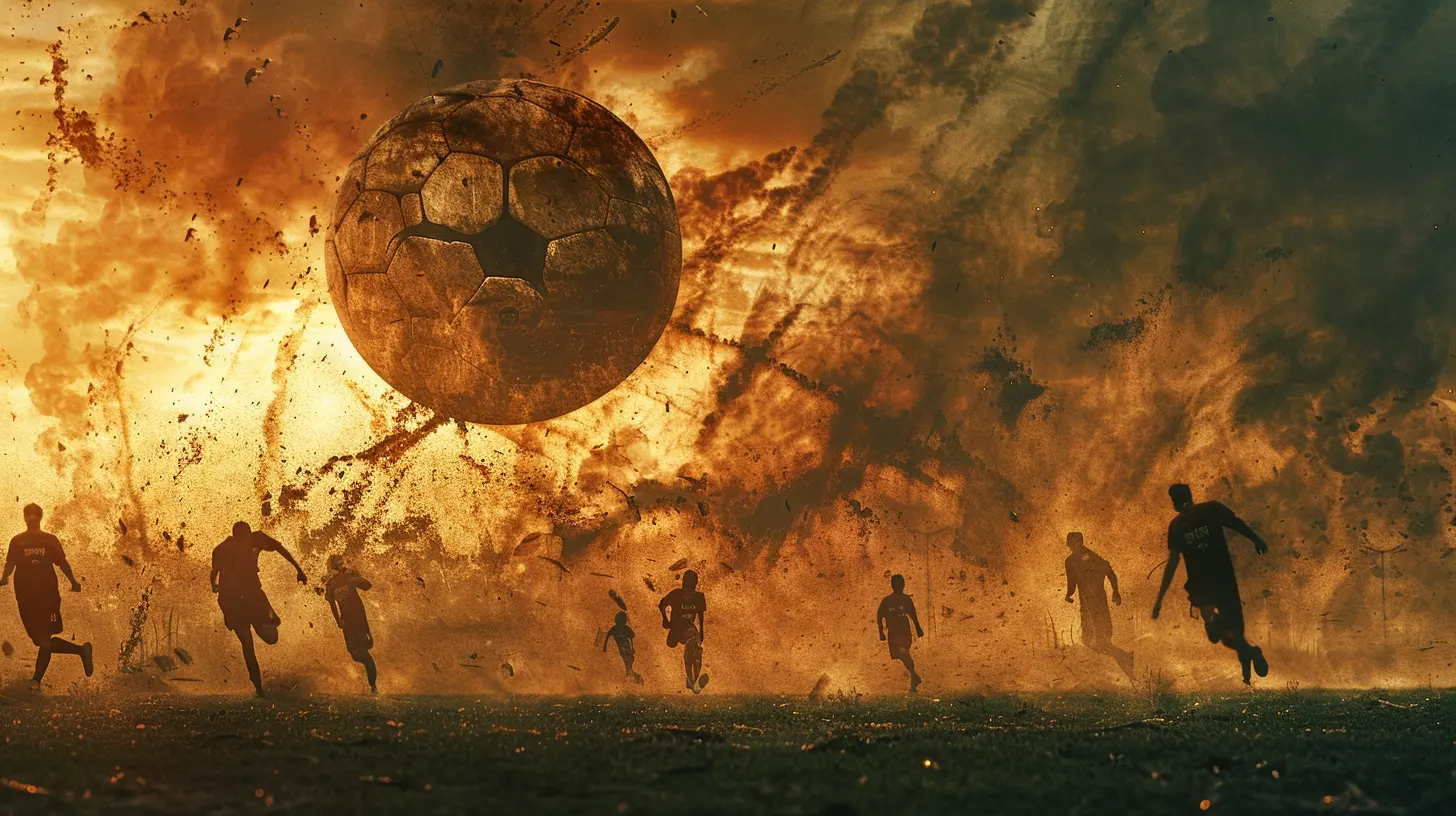The Evolution of Soccer: From Ancient Roots to Global Phenomenon
22 April 2025
Soccer, or football as it's known in most of the world, is more than just a sport—it's a global obsession. From packed stadiums to kids kicking a ball in the street, the beautiful game has captured the hearts of millions. But have you ever stopped to wonder how soccer came to be?
In this article, we'll take a journey through time, tracing the origins of soccer from its ancient roots to the modern-day spectacle we know and love.

Ancient Beginnings: The Birth of the Beautiful Game
Believe it or not, soccer isn’t a modern invention. Its origins date back thousands of years, with various cultures playing games that bear a striking resemblance to today’s football.1. Cuju – The Chinese Connection
One of the earliest known forms of soccer-type games is Cuju, which dates back to around 2,000 BC in ancient China. “Cuju” literally translates to “kick ball,” and it was played with a leather ball stuffed with feathers. The goal? Kick the ball into a net without using your hands. Sounds familiar, right?The game was so popular that it even became a training exercise for soldiers during the Han Dynasty. Imagine warriors sharpening their skills—not with swords, but with a ball at their feet!
2. Mesoamerican Ball Games
Meanwhile, ancient civilizations in Mesoamerica, like the Aztecs and Mayans, had their own ball games. Their version, however, was a bit more brutal—sometimes even involving human sacrifices. Thankfully, today’s soccer has far less at stake (unless you're talking about the World Cup final).3. Kemari in Japan
Over in Japan, Kemari was another early form of football, played as far back as the 7th century. Unlike modern soccer, Kemari was more of a juggling game, where players kept a ball in the air using only their feet. It was more about skill and control rather than direct competition.
Medieval Soccer: Chaos and Controversy
Fast forward to medieval Europe, where soccer (or at least a rough version of it) began taking shape. But let’s be clear—this wasn’t the structured, rule-based game we know today. It was wild, often brutal, and sometimes even banned!The Mob Football Era
During the Middle Ages, towns and villages played what’s known as "mob football." There were very few rules, and matches could involve an entire town. The goals? Whatever landmarks were agreed upon. The methods? Anything short of outright murder.These matches were notorious for causing damage to property and injuries to players and bystanders alike. Some rulers, like King Edward II of England, went as far as banning the game, fearing it was a distraction from military training.
But despite attempts to suppress it, the game refused to die. It had already found its way into the hearts of the people.

The Birth of Modern Soccer
The chaotic, unruly game of medieval times eventually evolved into something more structured. By the 19th century, soccer began to take on the form we recognize today.1. The Cambridge Rules
In 1848, students at Cambridge University drafted what became known as the Cambridge Rules—an early attempt to standardize soccer. These rules eliminated some of the more violent aspects of the game, including excessive physical contact.2. The Formation of The Football Association (FA)
In 1863, a group of clubs and schools in England came together to form The Football Association (FA). This was a game-changer (pun intended). The FA established official rules, including banning the use of hands (except by goalkeepers). These rules laid the foundation for modern soccer.From this point on, soccer rapidly grew in popularity—not just in England, but around the world.

The Globalization of Soccer
By the late 19th and early 20th centuries, soccer had exploded beyond Britain’s borders, thanks to British sailors, merchants, and workers introducing the game to new countries.1. Soccer Heads to South America
South America embraced soccer with open arms, and today, countries like Brazil, Argentina, and Uruguay are powerhouses of the sport. Can you imagine a World Cup without Brazil's samba-style football or Argentina’s fierce passion? Neither can we.2. The FIFA Era Begins
In 1904, the Fédération Internationale de Football Association (FIFA) was founded to oversee the global game. This marked the beginning of international tournaments and the growth of soccer as a worldwide sport.The first FIFA World Cup took place in 1930 in Uruguay, with the host nation taking home the trophy. Little did they know that this would become the biggest sporting event on the planet in the years to come.
The Modern Game: Soccer Takes Over the World
Today, soccer is not just a sport—it’s a billion-dollar industry with an enormous global fan base.1. The Rise of Club Football
While international soccer remains immensely popular, club football has become a multi-billion-dollar industry. Major leagues like the English Premier League (EPL), La Liga, Serie A, Bundesliga, and Ligue 1 attract millions of fans worldwide.Top clubs like Barcelona, Real Madrid, Manchester United, and Bayern Munich have become global brands, with supporters in every corner of the world.
2. The Influence of Technology
Soccer has evolved with technology. From VAR (Video Assistant Referee) to goal-line technology, modern innovations ensure fairness and precision in decision-making.Additionally, social media and streaming platforms mean fans can watch their favorite teams anywhere, anytime—gone are the days of missing a match because it's not on TV!
3. Women’s Soccer on the Rise
For decades, men’s football dominated the headlines, but women's soccer has been making incredible strides. The FIFA Women's World Cup now garners millions of viewers, and leagues worldwide are seeing increased investment and interest.Players like Megan Rapinoe, Marta, and Alexia Putellas have become icons, inspiring young girls everywhere to take up the sport.
Soccer’s Future: What Lies Ahead?
Where does soccer go from here? The game continues to evolve, with new tactics, technologies, and formats emerging. Whether it’s 5-a-side street football or the expansion of the World Cup, soccer’s growth shows no signs of slowing down.With advancements in AI, sports analytics, and even virtual reality, who knows what soccer will look like in 50 years? One thing’s for sure—it will always be the world’s game.
Final Thoughts
Soccer's journey—from ancient Chinese Cuju to the dazzling lights of the modern game—is a testament to its power and appeal. No matter where you go, someone is kicking a ball, dreaming of scoring the winning goal.It's more than just a game; it's a universal language that unites people across cultures, continents, and generations. And that’s why soccer will always be the beautiful game.
all images in this post were generated using AI tools
Category:
Sports HistoryAuthor:

Nelson Bryant
Discussion
rate this article
6 comments
Lola Parker
Soccer’s journey from ancient roots to global acclaim highlights humanity's shared passion, uniting diverse cultures through the beautiful game.
May 18, 2025 at 5:09 AM

Nelson Bryant
Thank you! Soccer truly transcends boundaries, celebrating our shared love for the game throughout history.
Adrian Roberson
Soccer's journey from ancient roots to a global spectacle highlights its unique ability to unite diverse cultures, transcending boundaries and fostering community, making it more than just a sport.
May 14, 2025 at 3:16 AM

Nelson Bryant
Thank you for your insightful comment! Indeed, soccer's rich history and its power to connect people across cultures truly exemplify its significance beyond just a game.
Anna McVicker
This article beautifully highlights soccer’s incredible journey through time. It’s inspiring to see how a simple game evolved into a global unifier, showcasing the power of sport to connect us all.
April 29, 2025 at 6:51 PM

Nelson Bryant
Thank you! I'm glad you found the article inspiring and appreciated soccer's journey as a unifying force.
Calder Franco
Ah, soccer—where kicking a ball around has transformed from ancient warriors battling for glory into today’s global phenomenon, complete with fancy footwork and an obsession with fancy haircuts. Who knew dribbling could be both a skill and a hairstyle statement?
April 28, 2025 at 11:11 AM

Nelson Bryant
Absolutely! It's fascinating how soccer has evolved, blending athleticism with personal expression—both on and off the field.
Jane Webster
This article brilliantly captures the rich history of soccer, tracing its evolution from ancient games to the global phenomenon it is today. The exploration of cultural influences and key milestones provides valuable insight into how the sport transcends borders, uniting millions and evolving with the times. A must-read for enthusiasts!
April 24, 2025 at 8:41 PM

Nelson Bryant
Thank you for your kind words! I'm glad you found the article insightful and appreciated the exploration of soccer's rich history.
Spike Lewis
What a fascinating journey soccer has taken! It's amazing to see how a simple game has transformed into a global spectacle, connecting millions. Can't wait to see where it goes next! ⚽️🌍
April 23, 2025 at 10:50 AM

Nelson Bryant
Thank you! It's incredible to witness soccer's journey and its impact on cultures worldwide. Exciting times lie ahead! ⚽️




